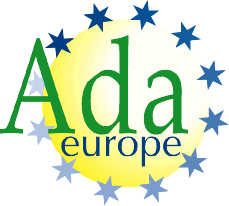3.2 Types and Subtypes
Static Semantics
A
type
is characterized by a set of values, and a set of
primitive operations
which implement the fundamental aspects of its semantics.
An
object of a given type is a run-time entity that contains (has)
a value of the type.
Types are
grouped into
categories of types.
There exist
several
language-defined categories of types (see NOTES below),
reflecting the similarity of their values and primitive operations.
Most categories of types form
classes of types.
Elementary
types are those whose values are logically indivisible;
composite
types are those whose values are composed of
component values.
The elementary types are the
scalar types (
discrete and
real) and the
access
types (whose values provide access to objects or subprograms).
Discrete
types are either
integer types or are defined by enumeration of
their values (
enumeration types).
Real types
are either
floating point types or
fixed point types.
The composite types are the record types,
record extensions, array types, interface types,
task types, and protected types.
There
can be multiple views of a type with varying sets of operations. An
incomplete
type represents an incomplete view (see
3.10.1)
of a type with a very restricted usage, providing support for recursive
data structures. A
private type or
private extension represents
a partial view (see
7.3) of a type, providing
support for data abstraction. The full view (see
3.2.1)
of a type represents its complete definition. An incomplete or partial
view is considered a composite type, even if the full view is not.
Certain composite types (and
views thereof) have special components called
discriminants whose
values affect the presence, constraints, or initialization of other components.
Discriminants can be thought of as parameters of the type.
The term
subcomponent
is used in this International Standard in place of the term component
to indicate either a component, or a component of another subcomponent.
Where other subcomponents are excluded, the term component is used instead.
Similarly, a
part of an object or value is
used to mean the whole object or value, or any set of its subcomponents.
The terms component, subcomponent, and part are also applied to a type
meaning the component, subcomponent, or part of objects and values of
the type.
The set of possible values for
an object of a given type can be subjected to a condition that is called
a
constraint (the case
of a
null constraint that specifies no restriction is also included);
the rules for which values satisfy a given kind of constraint are given
in
3.5 for
range_constraints,
3.6.1 for
index_constraints,
and
3.7.1 for
discriminant_constraints.
The set of possible values for an object of an access type can also be
subjected to a condition that excludes the null value (see
3.10).
A
subtype of a given type
is a combination of the type, a constraint on values of the type, and
certain attributes specific to the subtype. The given type is called
the
type of the subtype.
Similarly,
the associated constraint is called the
constraint of the subtype.
The set of values of a subtype consists of the values
of its type that satisfy its constraint and any exclusion of the null
value.
Such values
belong to the subtype.
A
subtype is called an
unconstrained subtype if its type has unknown
discriminants, or if its type allows range, index, or discriminant constraints,
but the subtype does not impose such a constraint; otherwise, the subtype
is called a
constrained subtype (since it has no unconstrained
characteristics).
2 Any set of types can be called a “category”
of types, and any set of types that is closed under derivation (see
3.4)
can be called a “class” of types. However, only certain categories
and classes are used in the description of the rules of the language
— generally those that have their own particular set of primitive
operations (see
3.2.3), or that correspond
to a set of types that are matched by a given kind of generic formal
type (see
12.5).
The following
are examples of “interesting”
language-defined classes:
elementary, scalar, discrete, enumeration, character, boolean, integer,
signed integer, modular, real, floating point, fixed point, ordinary
fixed point, decimal fixed point, numeric, access, access-to-object,
access-to-subprogram, composite, array, string, (untagged) record, tagged,
task, protected, nonlimited. Special syntax is provided to define types
in each of these classes. In addition to these classes, the following
are examples of “interesting”
language-defined categories:
abstract, incomplete, interface, limited, private,
record.
These language-defined categories are organized like
this:
all types
elementary
scalar
discrete
enumeration
character
boolean
other enumeration
integer
signed integer
modular integer
real
floating point
fixed point
ordinary fixed point
decimal fixed point
access
access-to-object
access-to-subprogram
composite
untagged
array
string
other array
record
task
protected
tagged (including interfaces)
nonlimited tagged record
limited tagged
limited tagged record
synchronized tagged
tagged task
tagged protected
There are other categories, such as “numeric”
and “discriminated”, which represent other categorization
dimensions, but do not fit into the above strictly hierarchical picture.
 Ada 2005 and 2012 Editions sponsored in part by Ada-Europe
Ada 2005 and 2012 Editions sponsored in part by Ada-Europe





 Ada 2005 and 2012 Editions sponsored in part by Ada-Europe
Ada 2005 and 2012 Editions sponsored in part by Ada-Europe